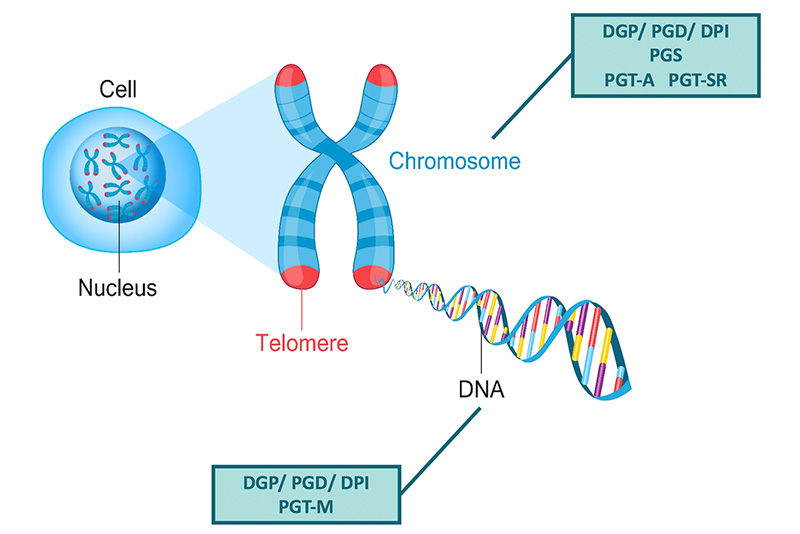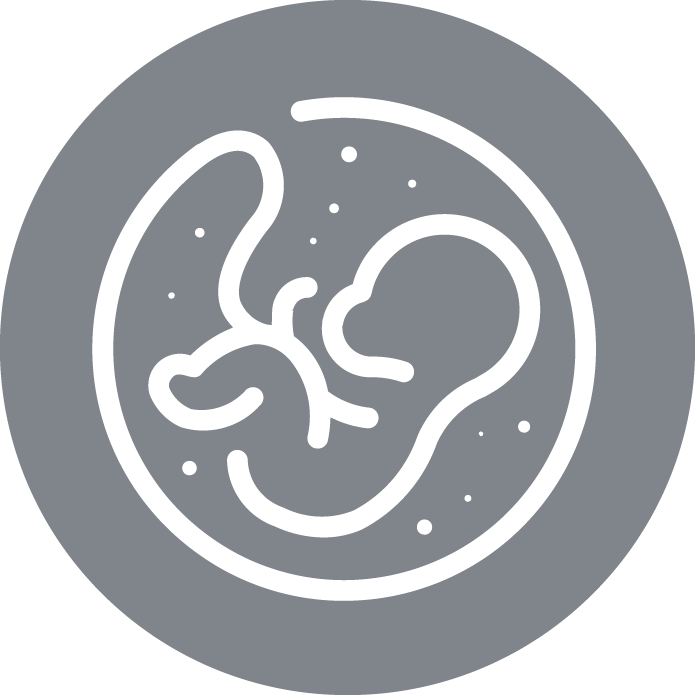Preventing chromosomal and genetic abnormalities in embryos
Preventing chromosomal and genetic abnormalities in embryos is one of the greatest challenges facing science in the field of assisted reproduction. At IVI Global Education we are well aware of this and we know that it is one of the topics that raise the most interest among professionals and patients who are going to undergo an assisted reproduction treatment.
At times, prospective parents are affected or have a family history of genetic diseases. On the other hand, chromosomal abnormalities occur as a result of gaining or losing a chromosome or a fragment of it.
Once the couple's cerotype is obtained or the mutation linked to a disease that one of the members carries is recognized, depending on the case, we will use different strategies to achieve the birth of a healthy newborn baby.
This diagnosis can be made at preconception, preimplantation or prenatal level. The direct analysis of the embryos will always include a preimplantation diagnosis and will be based on the PGT or Preimplantation Genetic Testing.

PGT or Preimplantation Genetic Testing
In this case, we will extract one or two cells from the embryo on day 3 of the development or a set of cells from the embryo on day 5 of the development for later analysis by arrays of CGH or mass sequencing. Only healthy embryos will be transferred or cryopreserved.
We have three types of analysis according to the indication:
a) PGT-A or Preimplantation Genetic Testing for Aneuploidy
This method is aimed at reducing the risk of chromosomal abnormalities, improving the implantation of embryos and reducing miscarriage rates. It is particularly indicated in patients with advanced maternal age (> 37 years), recurrent miscarriages, implantation failures or newborns or miscarriages with previous chromosomal abnormalities.
b) PGT-M or Preimplantation Genetic Testing for Monogenic Defects
This method allows us to distinguish embryos that have not inherited a genetic mutation carried by one of the parents to obtain newborn babies free of the disease. This technique is only aimed at couples carrying mutations for a monogenic disease (caused by the mutation in a gene).
c) PGT-SR or Preimplantation Genetic Testing for Structural Rearrangements
Translocations are structural chromosomal abnormalities that are produced by a double break in two different chromosomes and the exchange of fragments between these chromosomes, while inversions are produced by a double break within the same chromosome and an insertion of this fragment in that chromosome after a 180º turn.
Patients with these chromosomal abnormalities, despite being phenotypically normal, have a high risk of miscarriage or offspring with malformations.
Although the Preimplantation Genetic Test is an invasive technique for the embryo, it does not compromise its survival if it is performed by expert qualified professionals. Therefore, all specialists in assisted reproduction should have solid theoretical and practical training to understand these anomalies, their phenotypic consequences, implications in embryonic development and should know embryonic biopsy techniques.
PGT techniques help us in our work to diagnose problems intrinsic to the couple and/or their embryos, and we can thus avoid repeated failures in the assisted reproduction cycles that lengthen the treatments, reduce our patients' hopes and make our mission more difficult.



